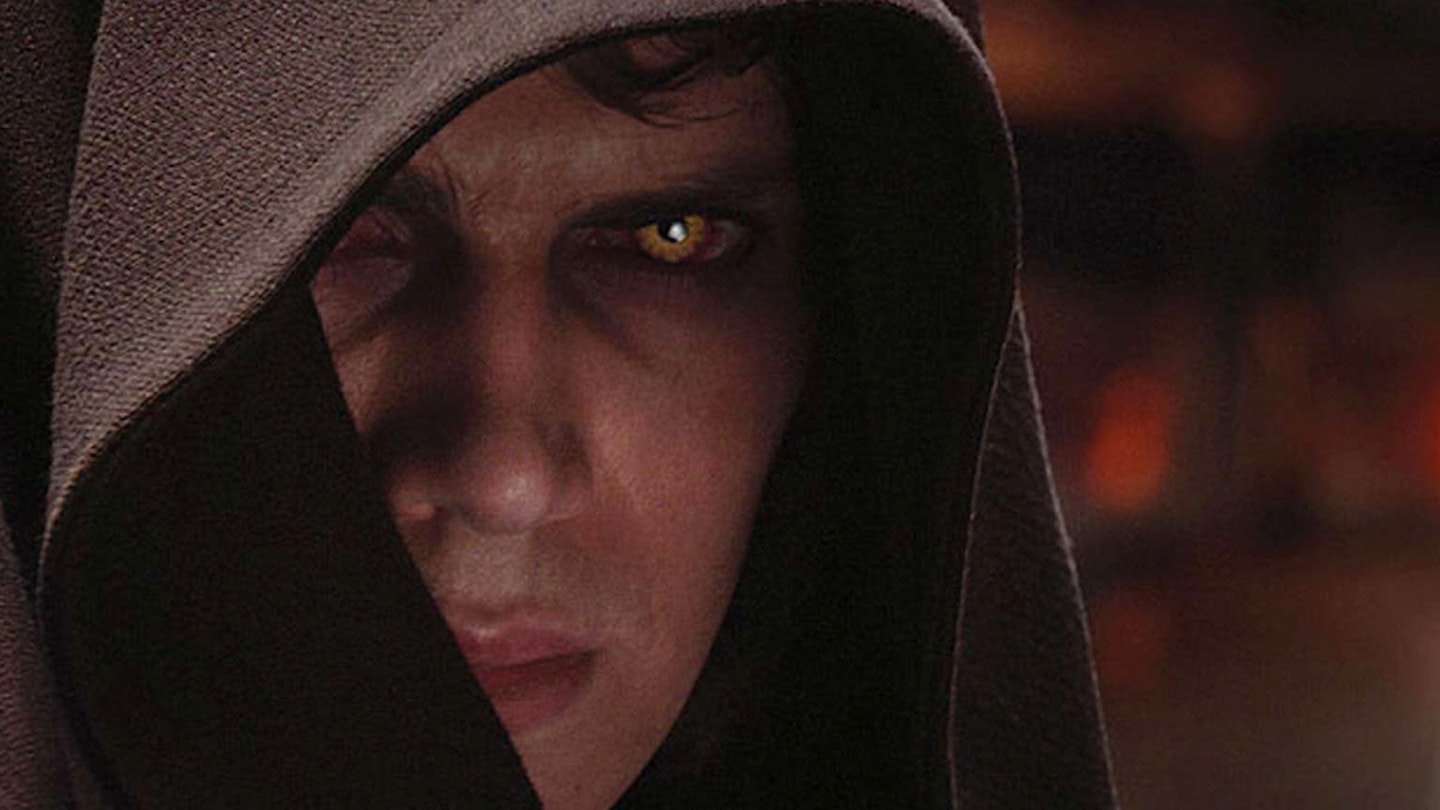In honour of Empire's new Star Wars prequels issue, celebrating the 25th anniversary of the trilogy's launch, we're asking – which of the prequel movies is the best? Read the case for Episode III – Revenge Of The Sith below, and find the issue on newsstands now.
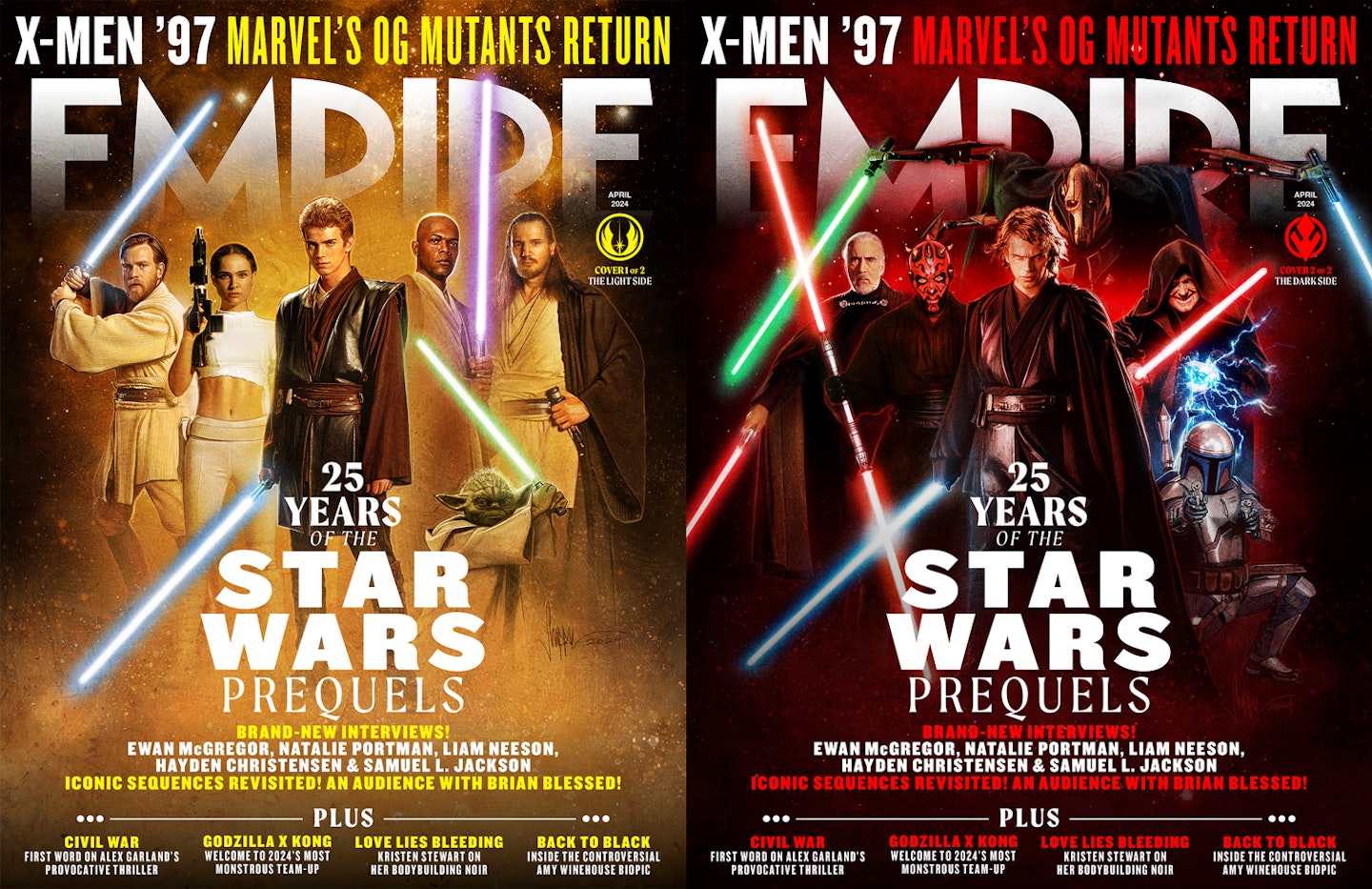
That Revenge Of The Sith is the darkest chapter in George Lucas’ Star Wars prequel trilogy has never been in any doubt. The first PG-13 film in the Skywalker Saga, Episode III starts with the promise of “War!” and spends the next 140 minutes delivering precisely that. Decapitation! Child murder! Genocide! The death of democracy and the rise of a fascist regime! Pretty intense for a family blockbuster released in the same month as Madagascar, right? But having been there on opening night in May 2005 as a wide-eyed seven-year-old – and writing this now almost 20 years later – Revenge Of The Sith represents the apotheosis of Lucas’ grand vision for the prequels. Big, bold, and brooding, the conclusion of the tragedy of Darth Vader is pure Shakespeare with added laser swords. For me, this has always been where the fun begins.
Right from the get-go, Revenge Of The Sith is driven by a palpable sense of urgency. Leaving all talk of trade route taxation and the coarseness of sand firmly at the door, Lucas kicks off his trilogy-ender with an all-timer Star Wars set-piece – The Battle of Coruscant. The sight of hundreds of starships (each individually choreographed and brilliantly animated by the wizards at ILM) engaging in an all-out aerial dogfight – Anakin and Obi-Wan’s interceptors darting between bolts of blue, green, and red as the duo mount a daring mission to rescue Chancellor Palpatine – makes for a scintillating opening salvo. Throw in the introduction of ‘saber-pilfering cyborg General Grievous, Artoo going full pyro on some poor unsuspecting droids, an Anakin-Obi-Wan-Dooku rematch, and an eardrum-rattling overture from maestro John Williams and I’m seven all over again.

Anakin and Obi-Wan’s early doors derring-do, buoyed by Ewan McGregor and Hayden Christensen’s quippy back-and-forth, only makes Anakin’s brutal execution of Count Dooku – at the behest of Ian McDiarmid’s corrupt Chancellor – all the more impactful. Fallen heroes have to first be heroes, and Anakin’s road to the dark side is paved with good intentions: he kills the Tusken Raiders in Attack Of The Clones trying to save his mother; he kills Dooku trying to save Palpatine; and he will go on to kill whoever stands in his way trying to save Padmé. There’s a fatalistic thread running right through the prequels, frequently underscored by ominous strains of John Williams’ ‘Imperial March’, that’s brought heartbreakingly to fruition in Sith.
Hayden Christensen really comes into his own in Episode III, playing Anakin’s downfall perfectly.
The wars at play here aren’t just literal (though Sith does take an Elvis approach to a space opera; a little less conversation, a little more action). There are battles in our heroes’ hearts and minds – Ewan McGregor sublimely threads the needle between his Obi-Wan and Alec Guinness’ take as he reckons with his apprentice’s fate. But it’s Hayden Christensen who really comes into his own in Episode III, playing Anakin’s downfall perfectly. All furrowed brows, tensed muscles, and haunted eyes, Christensen’s intense physicality powerfully externalises Anakin’s inner turmoil, imbuing even the most memeable lines of Lucas’ script with real weight. Even now, it’s (most) impressive to watch the way Christensen plays Anakin’s boyish smile when he learns of Padmé’s pregnancy, contrasted with Vader’s rage-filled, volcanic glare as he later chokes her on Mustafar.
Anakin’s downfall wouldn’t be possible, however, without the manipulative machinations of one Sheev “Darth Sidious” Palpatine, the prequels’ true phantom menace and – thanks to a deliciously theatrical Ian McDiarmid performance – Revenge Of The Sith’s real MVP. Peak Palps moments in Episode III are legion (“Dewit”; “UNLIMITED POWER!”; Senate frisbee with Master Yoda), but nothing beats the moment he goes full Sidious as Lucas takes his space opera to… well, a space opera.
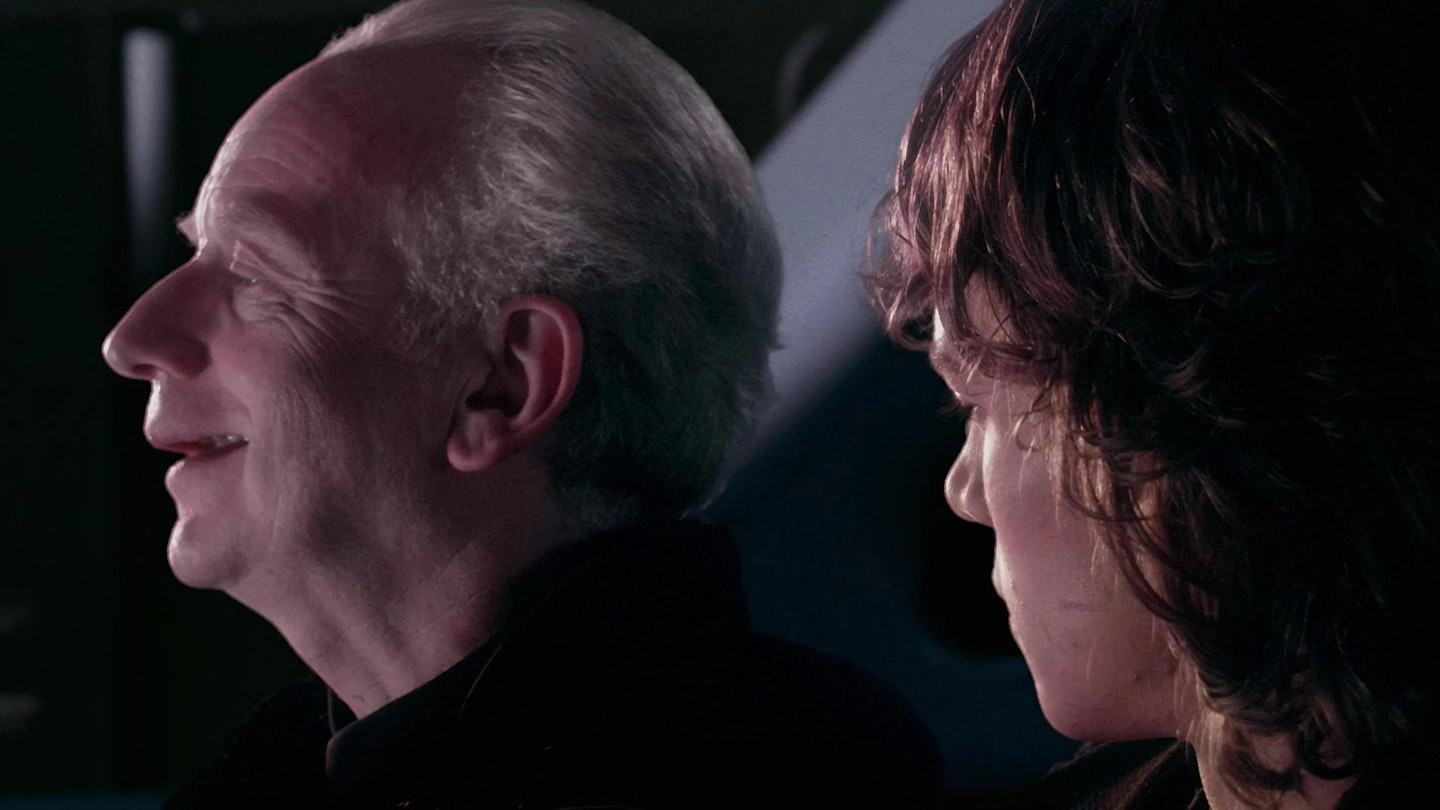
Eloquently described by McDiarmid as the moment “the old monster finally nails it with Anakin and gets him over to the dark side,” Palpatine’s telling of the tragedy of Darth Plagueis the wise is easily the second-best thing George Lucas has ever written (stay tuned for the #1). The iridescent bubbles and choral baritones of the opera (‘Squid Lake’, in case you were wondering); the sublime Sidious-like rasp in McDiarmid’s flu-addled voice as Palpatine preys on Anakin’s fear of death; the malcontent Skywalker’s succumbing query: “Is it possible to learn this power?” It’s shot entirely in close-up, delivered at scarcely a whisper, maybe the quietest scene in Revenge Of The Sith – but its ramifications, both narratively and thematically, echo loudly through the annals of Star Wars history. (Yes, Palpatine’s somehow-return in The Rise Of Skywalker is all teed up here.)
The top-spot, then, for Lucas’ greatest hits? The entire final hour of Revenge Of The Sith. Beginning with a gorgeously lensed calm-before-the-storm moment between Anakin and Padmé – the star-crossed lovers reaching out across Coruscant as the sun sets – Episode III’s borderline feature-length, balls-to-the-wall climax is magnificent. If The Phantom Menace painted a utopian picture of a peaceful pre-Empire galactic era, then Revenge Of The Sith razes that era to the ground amidst a blaze of blaster-fire, clashing ‘sabers, and spewing lava.
It’s an epic battle between good and evil, the culmination of almost thirty years of storytelling.
In recent years, the slaughter of younglings and the ultimate efficacy of Order 66 may have become dank meme fodder to be filed alongside the droid attack on the Wookies and “Hello There!”. But back in ‘05? That montage of Clones massacring Jedi across the galaxy, Anakin igniting his ‘saber at the Jedi temple, was a real watershed moment — a visceral evocation of the horrors of war and the sheer oppressive power of fascism. Thrilling and terrifying in equal measure, “Execute Order 66!” endures as a reminder of a more daring time in franchise filmmaking.
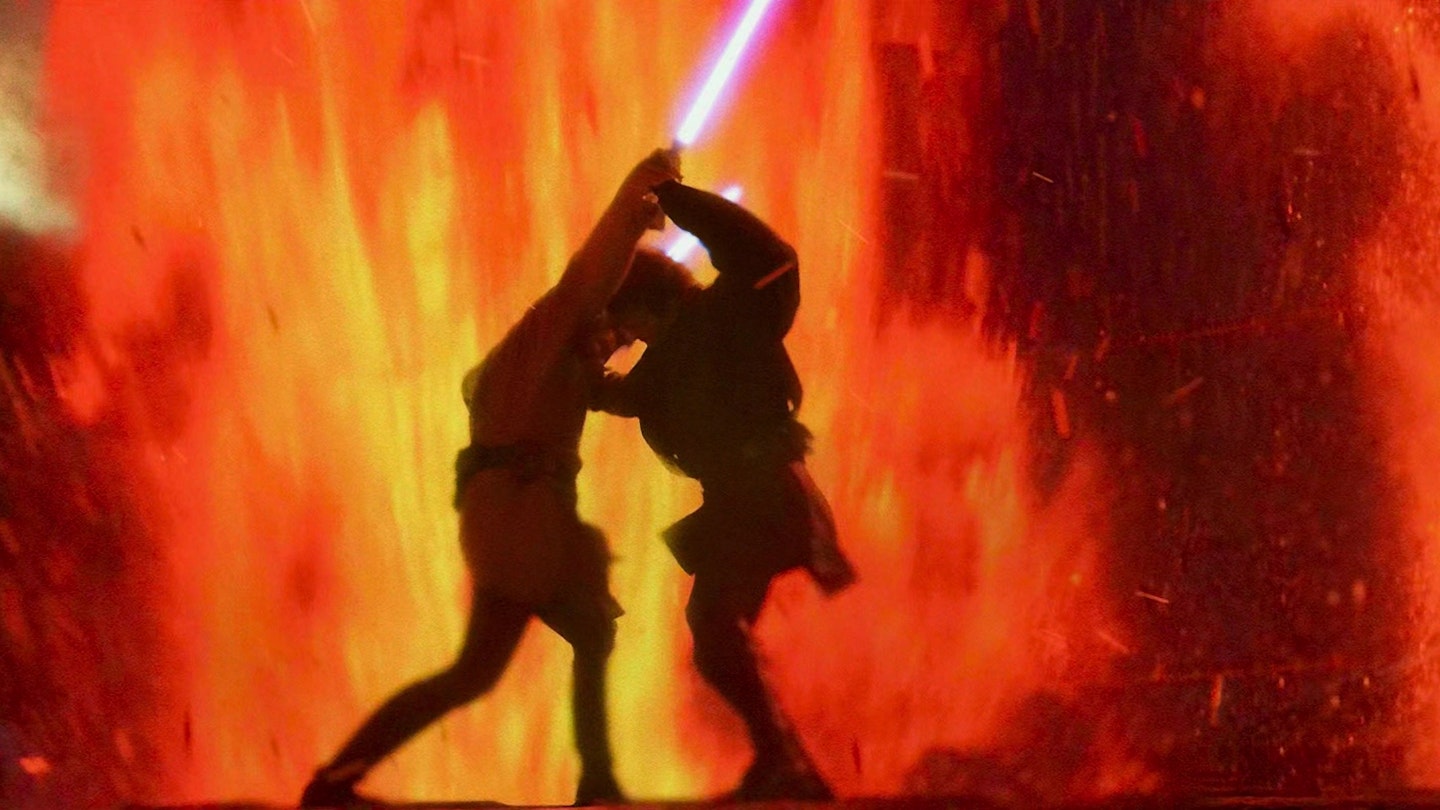
The real pièce de résistance is, undoubtedly, the Duel on Mustafar – a showdown 22 years in the making, seemingly taking place in the bowels of hell itself. Master vs Apprentice. Brother vs Brother. Obi-Wan Kenobi vs Anakin Skywalker. There’s no other way to put it – it’s amazing. As long as I live, I’ll never forget shouting “Anakin! No!” at the cinema screen.
Even now, the emotional and technical craftsmanship of the duel is astonishing. Christensen and McGregor’s blistering choreography and the emotional intensity of their performances; thousands of man-hours’ worth of VFX blending large-scale soundstage work and real footage of Mount Etna erupting; Lucas going full Shakespeare with Anakin’s excoriating, “I hate you!”, and Obi-Wan’s anguished, “You were my brother Anakin… I loved you”; John Williams going God-mode once more with his cacophonous score. It’s an epic battle between the forces of good and evil, the culmination of two trilogies and almost thirty years of cinematic storytelling, painted on the largest canvas imaginable. Honestly, what more could you want from a Star War?
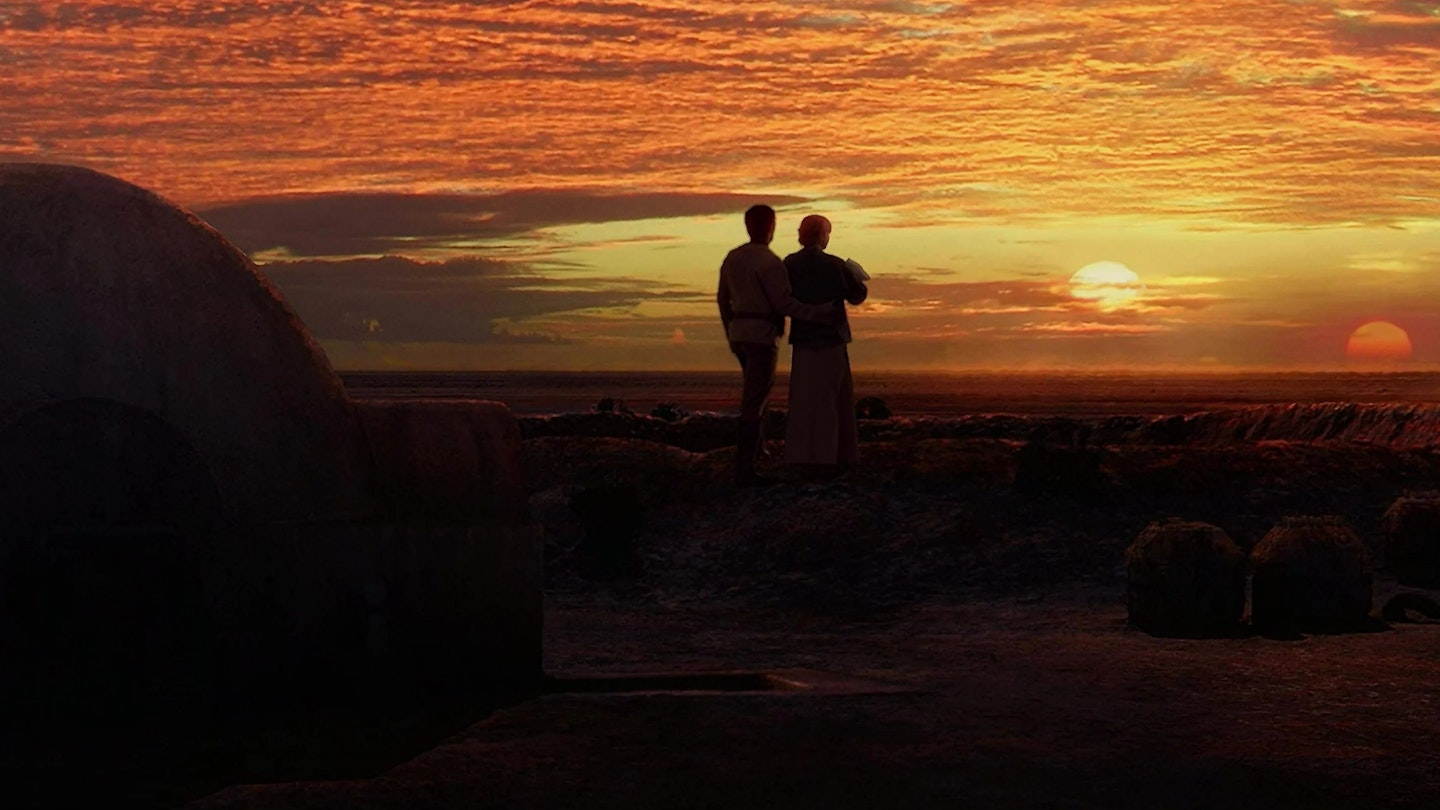
And at the end of it all, despite being the darkest chapter in the Skywalker Saga, Revenge Of The Sith’s wordless coda sees the prequels end as the original trilogy began — with a binary sunset on Tatooine. Darkness looms over the galaxy, bringing with it uncertainty and fear. But beneath those twin suns, whose light endures, a new hope is born. A perfect end to a perfect Star Wars movie. It’s like poetry, you know? It rhymes.
***
Read Empire’s full Star Wars prequels celebration in the 25th anniversary issue. Also inside the magazine, we speak to Hayden Christensen, Ewan McGregor, Ian McDiarmid, Natalie Portman, Liam Neeson, Samuel L. Jackson, Brian Blessed and more about starring in the films; revisit iconic sequences; get a closer look at rarely-seen concept art from across the trilogy; and much, much more. Find the issue in all good and evil newsagents – from the core worlds to the outer rim – now.
